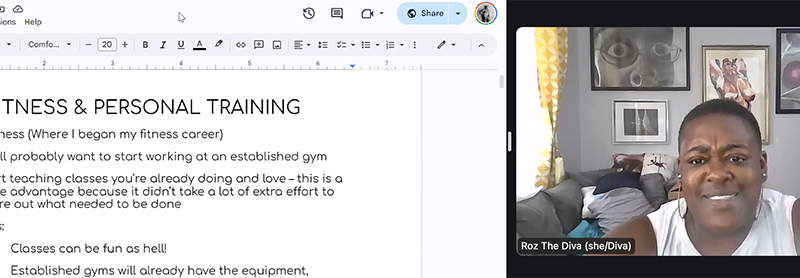[memberonly level=“Group Membership for Businesses of 2-5 individuals, Student, Individual or Solo-Preneur”] Please note that…

Does Your Pole Studio Have an Emergency Action Plan?
Injuries are bound to happen in a pole studio. Pole dancers put their bodies through extreme demands including climbing, inverting, stretching, and dancing at high levels of intensity. Sure, the benefits outweigh the risks. But is your studio prepared for those risks? Would if there is a fire at your studio? Do you have a plan of action? Use this template to create your own emergency action plan.
What is an emergency action plan?
Emergency action plans are written procedures to deal with emergent situations specific to the location of your business. Creating an emergency action plan (EAP) is a good practice in identifying the emergencies that are most likely to occur both within your studio (example: student injury) or at your studio’s location (example: fire or tornado). The emergency action plan is unique to your studio and its location. While you certainly cannot plan for every possible scenario, studios that have written and trained their staff on emergency action plans can significantly improve the effectiveness of response to emergencies, thereby reducing student and employee injuries.
Essentials of the Emergency Action Plan
At the minimum, the essential items of an emergency action plan include the following:
- Emergency personnel: Who is responsible for activating the emergency action plan? This is likely the studio owner and/or staff members (if studio owner is not on site).
- Emergency communication: Examples are dialing 911 or pulling the fire alarm.
- Evacuation procedures and emergency escape routes: This includes how to exit the studio should an emergency occur. Diagrams that detail the escape routes are helpful. Staff must be trained so that they may guide students appropriately.
- Accounting for students and staff when an emergency has occurred: Does your studio have an alarm system? If not, someone should be responsible for ensuring all students and staff are notified of the situation.
- Notifying Emergency Medical Services (EMS): This part of the plan involves when to call EMS and who is responsible for doing so. It is important to have details ready for EMS (address and contact info of the studio, special directions or instructions for accessing the studio).
- Follow-up procedures: After an injury or emergency occurs, it is crucial to document the occurrence for legal purposes. Having an already-established injury report document on hand is helpful for staff. See this sample injury report and follow-up template.
Other items to consider adding into the emergency action plan include:
- Location of emergency contacts for your students: This is most often placed in the liability waiver and/or uploaded to your client management system (example: WellnessLiving, one of our partners who provides a discount to IPIA members).
- Emergency equipment: Do you have an AED on site? If your studio is located in a gym, the gym likely has an AED in a visible and accessible location.
- Multiple studio locations: If you have more than one studio location, the emergency action plan must be written specific to each studio.
For more information, OSHA has a helpful tool to walk business owners through drafting and implementing emergency action plans.
Updating the Emergency Action Plan
Remember that the EAP is a working document, meaning that it should be reviewed and revised accordingly. At a minimum, it should be reviewed and updated annually. Make sure to include a revision date to keep track of when it was last reviewed. It should also be reviewed following an emergency. This ensures that procedures were followed and helps identify areas in the plan that could be improved.
Training Staff on the Emergency Action Plan
The emergency action plan must be reviewed and rehearsed with your staff. The onboarding of each new staff member should include familiarization of the emergency action plan. Because studios hire new staff members regularly, it is good practice to rehearse the emergency action plan bi-annually or annually with the entire staff.
How does the Liability Waiver relate to the Emergency Action Plan?
Make sure new students at your studio read and sign a liability waiver. Liability waivers attempt to release responsibility from the studio to a student when injuries occur. It is a good idea to have the student provide an emergency contact on the liability waiver. File and organize the waivers in a way that they are readily accessible such as uploading to your client management system. This is important if you need to quickly access a student’s contact in an emergency situation.
Conclusion
In conclusion, assess the risks that may be associated with your studio and its location. Write an emergency action plan specific to each studio location. Make sure staff members have read, understood, and rehearsed the emergency action plan. Review your liability waiver to ensure it has an emergency contact section that can be easily accessible in an emergent situation. Update the emergency action plan annually. While it is not possible to account for every emergent situation, having an emergency action plan in place can significantly reduce risk of injury and legal action at your studio.



